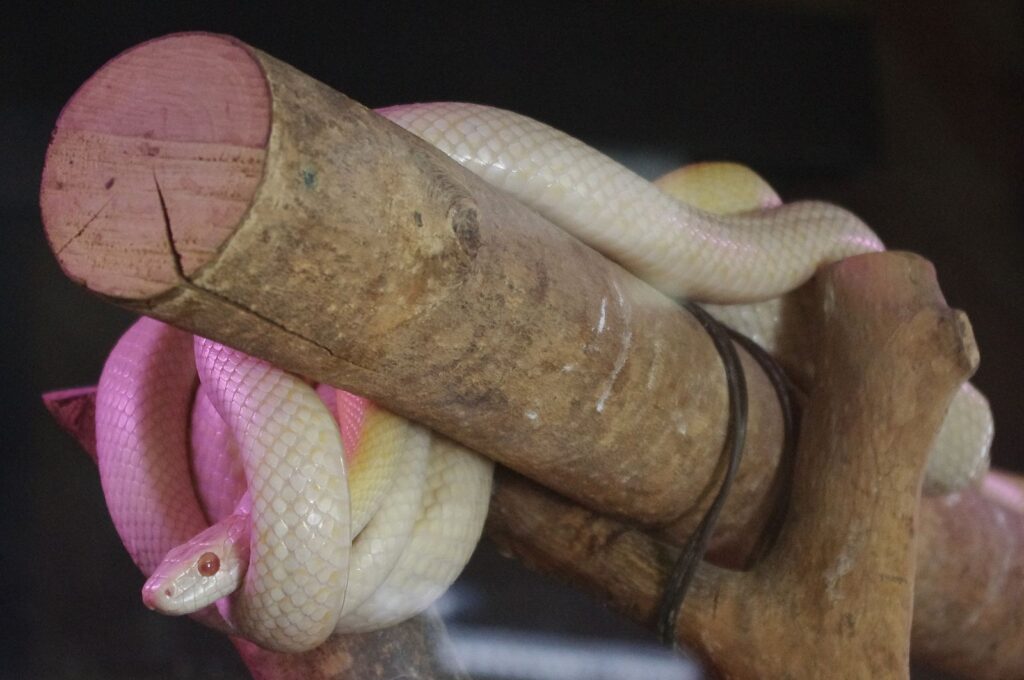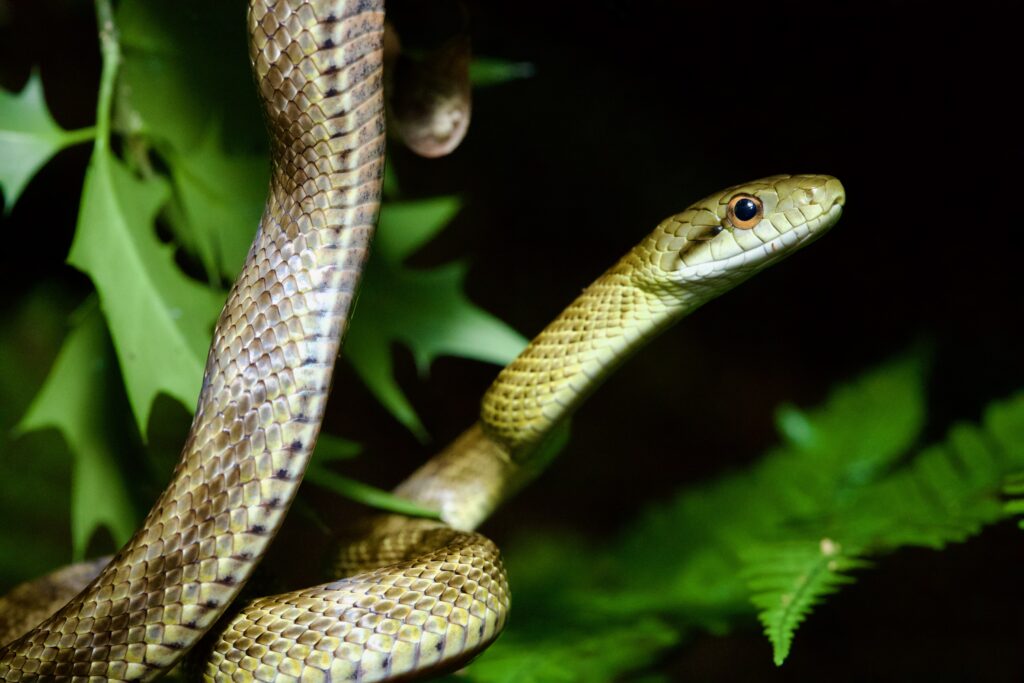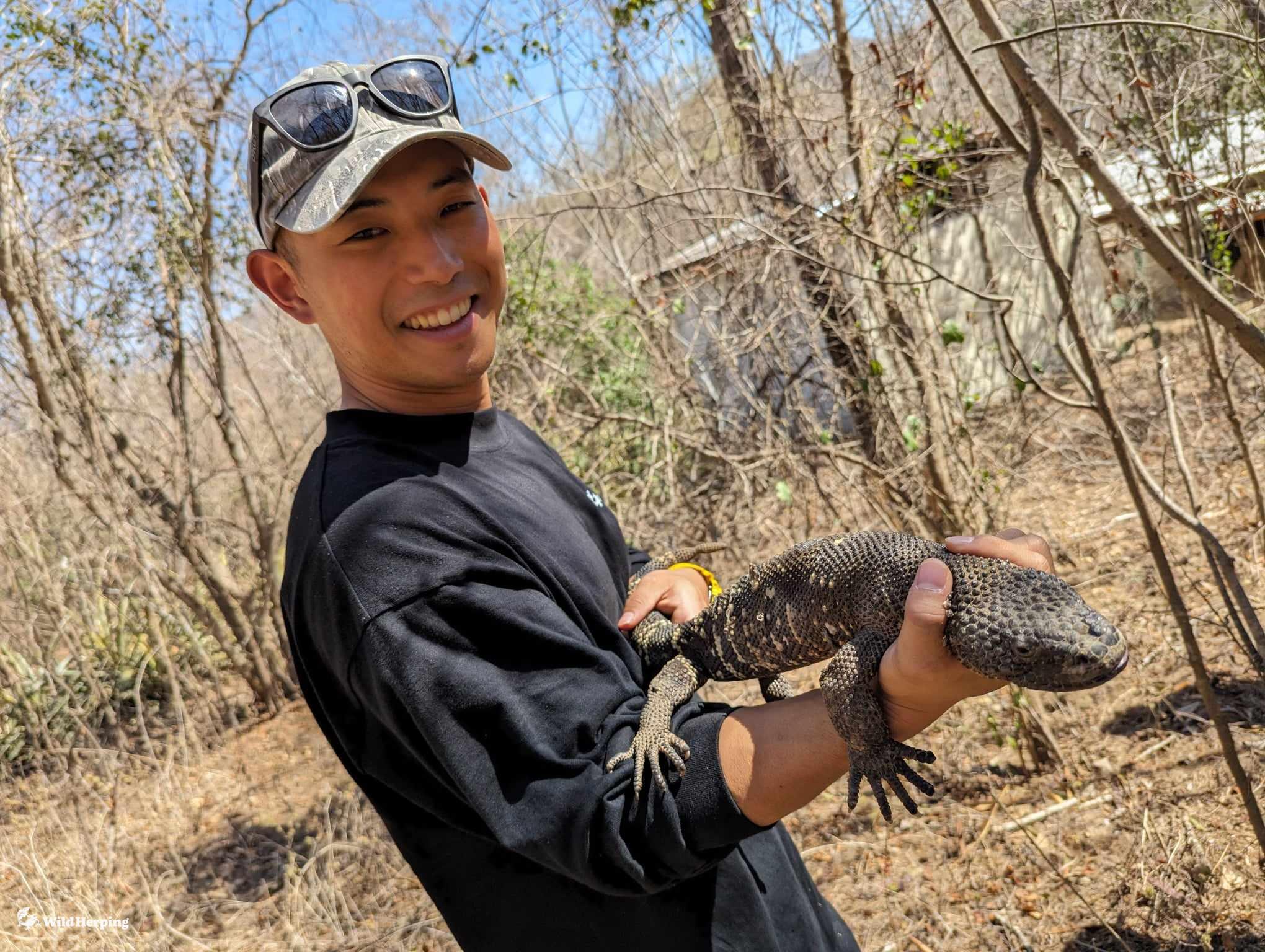How to Encounter Japan’s Cutest-Faced Snake, the Japanese Rat Snake(Elaphe climacophora)
The Japanese rat snake(Elaphe climacophora), known for having one of the most endearing faces among snakes in Japan, is renowned for its sizable scales, orange-hued irises, and jet-black eyes that captivate the hearts of herpers with just one glance. The black markings extending from its eyes further accentuate its cuteness. Today, let me share with you some tips on how to spot this unique Japanese snake.

Astonishing Features and Habitat
The Japanese native Japanese rat snake is known as the largest snake on the mainland. Its distinctive appearance includes muted green or olive-colored bodies adorned with dark brown vertical stripes, and their squared-off heads with black markings behind the eyes help in identification. Some individuals can reach lengths of up to 200cm.
These snakes have been sighted in proximity to human settlements since ancient times. They’ve been valued for preying on rodents but have also instilled fear due to their tendency to hunt domestic fowl.
Notably, in Iwakuni City, Yamaguchi Prefecture, the albino variant of the Japanese rat snake, known as the “Shirohebi of Iwakuni,” is revered and protected as a national natural monument.

Moreover, those in Hokkaido exhibit a stronger bluish hue, earning them the moniker “Ezo Blue.”
Japanese rat snakes inhabit various environments such as forests, farmlands, and watersides, displaying diurnal activity while preying on birds and rodents both on trees and on the ground. They adeptly use the keels on their bellies to climb trees, walls, and at times, even swim in water bodies. Their breeding period spans from spring to summer, and they are believed to live for over a decade.
Additionally, they possess small keels on both sides of their ventral plates. This feature allows them to climb trees, branches, and walls, showcasing their unique climbing abilities. This skill enables them to live in urban areas like Tokyo, surrounded by walls, a reason for their relatively frequent sightings in city centers.
Moreover, their esophagus has scythe-like protrusions, used to break eggshells they swallow, later regurgitating only the shell.
Noteworthy is their ability to emit a pungent odor as a threat display, despite lacking venom. This unique behavior stems from a brown liquid secreted by glands near the base of their tails.
Habitat: From Forests to Urban Areas

The Japanese rat snake thrives in a variety of environments, ranging from plains to mountainous regions. Their primary habitats include forests, embankments, and farmlands, displaying a tendency for arboreal behavior while also being active on the ground.
Their range of activity is extensive, spanning from high tree canopies to the ground, even delving into underground burrows and sewage systems. Due to their diet comprising rodents, they are often spotted around human settlements but are rarely seen in deep mountainous areas.
Remarkable is their unique method of climbing trees. Unlike typical snakes that coil to ascend, the Japanese rat snake has strong keels (or ridges) on both ends of its ventral scales, allowing it to scale tree trunks and branches vertically. This ability is the driving force behind their inhabitation of urban areas.
Their predators include eagles, tanuki (raccoon dogs), foxes, wild boars, with young snakes facing threats from martens, crows, and Japanese striped snakes. In case of predator attacks, they have the ability to hide by submerging themselves in riverbeds.
Primarily carnivorous, Japanese rat snakes prey on birds, their eggs, and mammals. As they mature, their tendency to prey on birds and mammals intensifies. They capture their prey by biting and coiling around, subsequently constricting to capture.
Their reproductive method is oviparous, mating from May to June and laying numerous eggs between July and August, which hatch approximately 47-63 days later.
Their habitat spans extensively, from natural to urban landscapes, presenting one of the fascinating aspects of their ecology.
Finding Japanese Rat Snakes
For the reasons mentioned, encountering Japanese rat snakes is relatively high in areas that present obstacles for other snakes, such as walls and stone structures in urban centers. Additionally, as their food source, rodents, tend to inhabit areas around human settlements, searching in such locations is recommended. When found, they are less likely to retaliate when touched gently.
Precautions
In Japan, the number of herpers is still relatively low. Many cannot distinguish between different snake species, and even if found, locals might harbor fear. It’s better not to introduce them casually, considering the typical nature of most Japanese people.
Conclusion
This was an introduction to the Japanese rat snake(Elaphe climacophora), boasting Japan’s cutest snake face. As a snake easily found in a relatively wide range, I encourage everyone to take up the challenge! When you find them, you’ll surely be smitten by their cuteness!










